The Flemmingsome reveals an ESCRT-to-membrane coupling via ALIX/syntenin/syndecan-4 required for completion of cytokinesis
- PMID: 32321914
- PMCID: PMC7176721
- DOI: 10.1038/s41467-020-15205-z
The Flemmingsome reveals an ESCRT-to-membrane coupling via ALIX/syntenin/syndecan-4 required for completion of cytokinesis
Abstract
Cytokinesis requires the constriction of ESCRT-III filaments on the side of the midbody, where abscission occurs. After ESCRT recruitment at the midbody, it is not known how the ESCRT-III machinery localizes to the abscission site. To reveal actors involved in abscission, we obtained the proteome of intact, post-abscission midbodies (Flemmingsome) and identified 489 proteins enriched in this organelle. Among these proteins, we further characterized a plasma membrane-to-ESCRT module composed of the transmembrane proteoglycan syndecan-4, ALIX and syntenin, a protein that bridges ESCRT-III/ALIX to syndecans. The three proteins are highly recruited first at the midbody then at the abscission site, and their depletion delays abscission. Mechanistically, direct interactions between ALIX, syntenin and syndecan-4 are essential for proper enrichment of the ESCRT-III machinery at the abscission site, but not at the midbody. We propose that the ESCRT-III machinery must be physically coupled to a membrane protein at the cytokinetic abscission site for efficient scission, uncovering common requirements in cytokinesis, exosome formation and HIV budding.
Conflict of interest statement
The authors declare no competing interests.
Figures
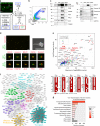
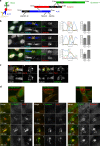
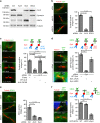
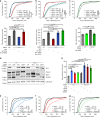
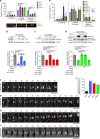

Similar articles
-
Human ESCRT and ALIX proteins interact with proteins of the midbody and function in cytokinesis.EMBO J. 2007 Oct 3;26(19):4215-27. doi: 10.1038/sj.emboj.7601850. Epub 2007 Sep 13. EMBO J. 2007. PMID: 17853893 Free PMC article.
-
ALIX and ESCRT-I/II function as parallel ESCRT-III recruiters in cytokinetic abscission.J Cell Biol. 2016 Feb 29;212(5):499-513. doi: 10.1083/jcb.201507009. J Cell Biol. 2016. PMID: 26929449 Free PMC article.
-
UMAD1 contributes to ESCRT-III dynamic subunit turnover during cytokinetic abscission.J Cell Sci. 2023 Aug 1;136(15):jcs261097. doi: 10.1242/jcs.261097. Epub 2023 Aug 10. J Cell Sci. 2023. PMID: 37439191 Free PMC article.
-
Knowing when to cut and run: mechanisms that control cytokinetic abscission.Trends Cell Biol. 2013 Sep;23(9):433-41. doi: 10.1016/j.tcb.2013.04.006. Epub 2013 May 22. Trends Cell Biol. 2013. PMID: 23706391 Review.
-
Cytokinetic Abscission: Phosphoinositides and ESCRTs Direct the Final Cut.J Cell Biochem. 2017 Nov;118(11):3561-3568. doi: 10.1002/jcb.26066. Epub 2017 May 30. J Cell Biochem. 2017. PMID: 28419521 Review.
Cited by
-
Analysis of the Human Pineal Proteome by Mass Spectrometry.Methods Mol Biol. 2022;2550:123-132. doi: 10.1007/978-1-0716-2593-4_16. Methods Mol Biol. 2022. PMID: 36180685
-
High-Content RNAi Phenotypic Screening Unveils the Involvement of Human Ubiquitin-Related Enzymes in Late Cytokinesis.Cells. 2022 Nov 30;11(23):3862. doi: 10.3390/cells11233862. Cells. 2022. PMID: 36497121 Free PMC article.
-
Contribution of integrin adhesion to cytokinetic abscission and genomic integrity.Front Cell Dev Biol. 2022 Dec 12;10:1048717. doi: 10.3389/fcell.2022.1048717. eCollection 2022. Front Cell Dev Biol. 2022. PMID: 36578785 Free PMC article. Review.
-
Syndecan receptors: pericellular regulators in development and inflammatory disease.Open Biol. 2021 Feb;11(2):200377. doi: 10.1098/rsob.200377. Epub 2021 Feb 10. Open Biol. 2021. PMID: 33561383 Free PMC article. Review.
-
The ESCRT Machinery: Remodeling, Repairing, and Sealing Membranes.Membranes (Basel). 2022 Jun 19;12(6):633. doi: 10.3390/membranes12060633. Membranes (Basel). 2022. PMID: 35736340 Free PMC article. Review.
References
Publication types
MeSH terms
Substances
LinkOut - more resources
Full Text Sources
Miscellaneous

